Disclosure: This article contains affiliate links. We may earn a commission from purchases at no extra cost to you, which helps our travel content.
Standing atop the ancient Citadel of Raymond de Saint-Gilles as the afternoon light bathes the stone in a honey-gold glow, I'm struck by how Tripoli remains Lebanon's best-kept secret. While Beirut buzzes with cosmopolitan energy and Byblos draws the Instagram crowds, this northern Lebanese city quietly preserves one of the Middle East's most authentic historical cores. The second-largest city in Lebanon isn't on most travelers' radars, which makes it all the more magical for those of us who appreciate architectural preservation without the tourist crowds. As someone who's photographed historical sites across 37 countries, I can confidently say that Tripoli's layered history—from Crusader fortifications to Mamluk madrasas and Ottoman hammams—offers one of the Mediterranean's most concentrated yet overlooked architectural timelines. For students of history, architecture, or simply those curious about the complex cultural tapestry of the Levant, this city demands your weekend attention.
The Crusader Citadel: Where Medieval History Comes Alive
My fascination with Tripoli began where most visitors should start their journey—at the imposing Citadel of Raymond de Saint-Gilles, perched dramatically on a hill overlooking the city. Built in 1103 during the First Crusade, this fortress tells the story of the complex power struggles that defined the medieval Mediterranean.
The citadel's massive walls rise from the hillside like an extension of the earth itself, with later Ottoman modifications seamlessly integrated into the Crusader architecture. What struck me most was how the fortress design reveals the cultural exchange that occurred even during times of conflict—Arab military architectural influences are evident in the defensive innovations added by European crusaders.
During my visit last spring, I spent a full morning exploring the labyrinthine corridors and climbing to various vantage points. Each turn revealed another layer of history—a Mamluk inscription here, a repurposed Byzantine column there. I recommend bringing a good travel journal to sketch architectural details that catch your eye. My own is filled with drawings of the unique arrow slits and defensive positions that made this fortress nearly impregnable.
The entrance fee (about 10,000 LBP/~$6.50 USD for students) is nominal compared to similar sites across Europe, and the relative lack of crowds means you can actually hear the whispers of history without being jostled by tour groups. Take your time here—the panoramic views of the Mediterranean coastline and Tripoli's old city from the upper ramparts are worth lingering over.

💡 Pro Tips
- Visit early morning (8-10am) for the best light for photography and fewer visitors
- Wear sturdy shoes as the stone pathways are uneven and can be slippery
- The citadel closes earlier than advertised sometimes (around 4pm), so don't leave it for late afternoon
The Mamluk Legacy: Madrasas and Minarets
After the Crusaders were expelled in the late 13th century, Tripoli fell under Mamluk rule, ushering in one of the city's most architecturally significant periods. The Mamluks relocated the city inland from its original port location and established what is now Tripoli's enchanting old city, Al-Mina.
My architectural background drew me immediately to the cluster of madrasas (Islamic schools) near the Great Mosque. The Madrasa al-Qartawiyya, with its striking black and white stone alternation (ablaq) and intricate muqarnas (stalactite-like decorative vaulting), exemplifies the sophisticated Mamluk architectural style that spread throughout their empire.
What makes Tripoli exceptional is that these buildings aren't museums—they're living history. Walking through the old city, I watched artisans practicing traditional crafts in workshops housed in centuries-old buildings. The Madrasa al-Nuriyya still functions as a place of learning, though now offering different subjects than its medieval curriculum.
I spent an entire afternoon meandering between these architectural masterpieces, my compact binoculars allowing me to study the detailed calligraphy and geometric patterns adorning the higher reaches of these structures. These binoculars have become an essential part of my architectural exploration kit, revealing details that would otherwise remain hidden to the naked eye.
The concentration of Mamluk monuments in Tripoli is unparalleled in Lebanon and rivals collections in Cairo and Damascus. For students of Islamic art and architecture, this compact area provides an open-air classroom spanning several centuries of artistic evolution.

💡 Pro Tips
- Many madrasas require modest dress with shoulders and knees covered
- Visit the Great Mosque first, as local guides often gather there and can provide impromptu tours of surrounding buildings
- Carry small denominations of Lebanese pounds for unexpected entrance fees to smaller sites
Ottoman Hammams: Bathing in History
Perhaps my most memorable experience in Tripoli was visiting Hammam al-Jadid, one of the best-preserved Ottoman bathhouses in the Levant. Built in 1740, this hammam operated continuously until the late 20th century and has now been beautifully restored as a cultural center.
The transition from the busy market streets into the cool, domed chambers of the hammam is transportive. Light filters through star-shaped cutouts in the ceiling, creating ethereal patterns across the marble floors. The central bathing hall, with its octagonal washing platform and surrounding niches, speaks to the sophisticated understanding of both architecture and human comfort that Ottoman builders possessed.
What makes these hammams architectural marvels isn't just their beauty but their functionality. The ingenious heating systems—with hot water and steam circulating beneath floors and between walls—showcase advanced engineering that predates modern heating systems by centuries.
While Hammam al-Jadid is the most accessible to visitors, Tripoli boasts several other Ottoman bathhouses in various states of preservation. Hammam Izz al-Din (dating to the 1290s but renovated during Ottoman rule) and Hammam al-Nouri offer glimpses into how these social institutions evolved over time.
I spent an afternoon sketching the transition spaces between the hammam's cold, warm, and hot rooms, fascinated by how the architects used subtle changes in ceiling height and light to create distinct atmospheric zones. If you're interested in architectural drawing, I highly recommend bringing a watercolor travel set to capture the play of light and shadow that makes these spaces so magical.

💡 Pro Tips
- Check opening hours in advance as some hammams are only open on specific days or for special events
- Some hammams still function as bathhouses with separate days for men and women—research beforehand if you want the authentic bathing experience
- Bring a small flashlight to better see architectural details in dimly lit areas
Al-Tall Square and the Ottoman Clock Tower
Transitioning from medieval to more recent history, Tripoli's Al-Tall Square (Place de l'Étoile) represents the Ottoman Empire's late attempts at modernization. The square's centerpiece—a magnificent clock tower built in 1901 to celebrate Sultan Abdul Hamid II's 25th year in power—stands as a testament to the architectural evolution of the city.
What fascinated me about this area is how it represents the Ottoman Empire's embrace of European urban planning concepts. The radiating streets, reminiscent of Haussmann's Paris designs, create an interesting counterpoint to the organic layout of the older medina nearby. This juxtaposition perfectly encapsulates the empire's struggle between tradition and modernization in its final decades.
The square comes alive in the early evening when local families promenade around the clock tower and enjoy ice cream from nearby shops. I spent several evenings here people-watching and sketching the eclectic mix of Ottoman and colonial-era buildings that frame the square.
Nearby, don't miss the Ottoman military barracks (now repurposed as government buildings) and the elegant 19th-century mosques that showcase the empire's later architectural style—a fascinating blend of traditional Islamic elements with European Baroque influences.
As the sun sets, the clock tower is beautifully illuminated, creating perfect photo opportunities. My travel tripod proved invaluable for capturing low-light shots of the square without blur. It's compact enough to carry all day but sturdy enough for long exposures that capture the magical quality of the square after dark.
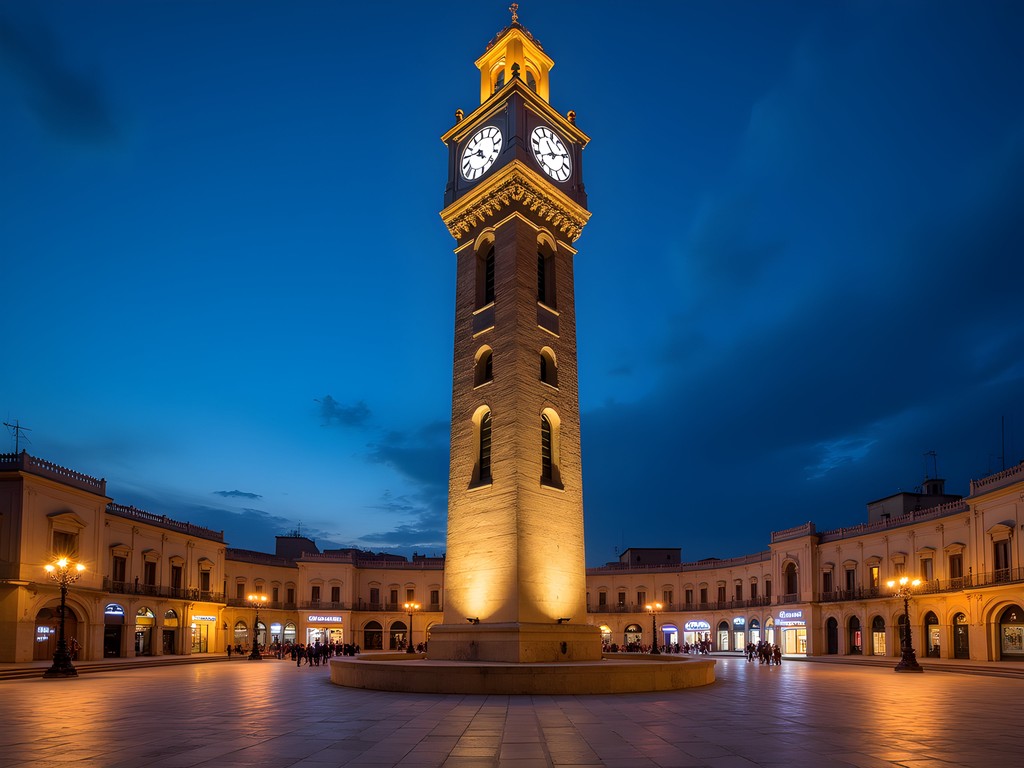
💡 Pro Tips
- Visit during both day and evening to experience the square's different atmospheres
- The surrounding cafes offer excellent people-watching opportunities
- Look for the subtle architectural differences between early and late Ottoman structures around the square
The Souks: Commerce Through the Centuries
No historical exploration of Tripoli would be complete without diving into its atmospheric souks (traditional markets), which have retained their medieval layout and function. Unlike the more tourist-oriented souks in other Middle Eastern cities, Tripoli's markets primarily serve locals, giving you an authentic glimpse into daily life that has continued largely unchanged for centuries.
The organization of Tripoli's souks follows the traditional Islamic city model, with specific areas dedicated to different trades and crafts. The Khan al-Saboun (Soap Khan) particularly captured my attention—this 17th-century caravanserai where traders would historically stay with their goods now houses workshops producing Tripoli's famous olive oil soaps. The vaulted stone architecture creates natural temperature regulation, demonstrating the environmental wisdom embedded in traditional building techniques.
As an investor in sustainable tourism ventures, I was impressed by the continuity of traditional crafts here. In the Souk al-Nahhasin (Coppersmith Market), artisans still hammer intricate patterns into metal using techniques passed down through generations. The rhythmic clanging echoes through the vaulted passageways, creating a soundscape that has remained unchanged for centuries.
For architecture enthusiasts, the souks offer a masterclass in vernacular building techniques. Notice how light filters through the ingenious ventilation systems, how the slightly raised thresholds prevent rainwater from entering shops, and how the stone construction maintains comfortable temperatures despite external weather conditions.
I spent hours wandering these labyrinthine passageways, photographing architectural details and collecting small treasures—handcrafted copper items, traditional olive oil soaps, and local sweets. My crossbody travel bag kept my camera and valuables secure while leaving my hands free to examine craftwork and take notes on architectural features.
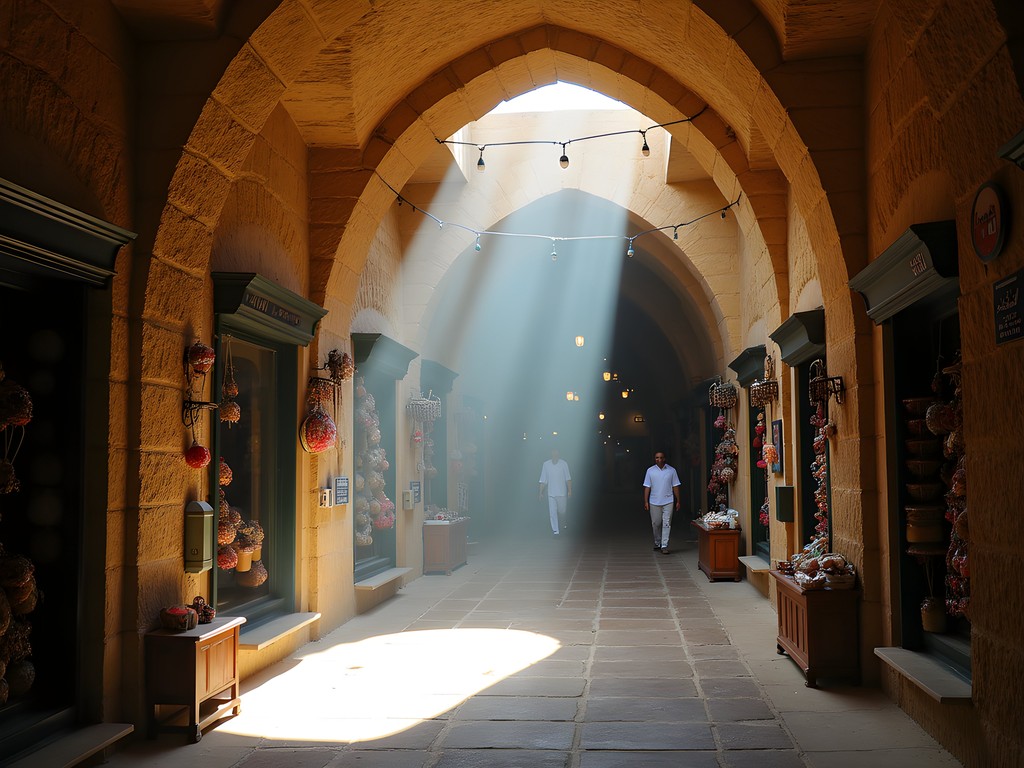
💡 Pro Tips
- Visit on weekday mornings when the souks are bustling with local shoppers
- The soap workshops in Khan al-Saboun welcome visitors—ask for demonstrations of traditional production methods
- Many shops close for Friday prayers—plan accordingly if visiting on this day
Final Thoughts
As I reluctantly boarded my bus back to Beirut, I found myself already planning a return trip to Tripoli. This city, so often overshadowed by Lebanon's other destinations, offers an unparalleled window into the architectural evolution of the Eastern Mediterranean. From the military pragmatism of Crusader fortifications to the spiritual refinement of Mamluk madrasas and the social sophistication of Ottoman hammams, Tripoli preserves a millennium of architectural history within a walkable urban core. For students of history, architecture, or cultural exchange, this northern Lebanese gem provides an accessible weekend adventure that rivals more famous destinations. The layers of civilizations here aren't cordoned off as museum pieces but remain integrated into the living city—a testament to how history can be preserved not by freezing it in time, but by allowing it to adapt and continue serving its community. When you visit, take your time, look up often, and remember that each stone has witnessed the passage of countless lives across centuries of tumultuous history.
✨ Key Takeaways
- Tripoli offers one of the Mediterranean's most concentrated collections of medieval and Ottoman architecture
- The city remains authentically Lebanese with few tourists, making it ideal for students seeking genuine cultural experiences
- Spring visits provide ideal weather for exploring while avoiding summer heat and winter rains
- A weekend is sufficient to see major sites, though architecture enthusiasts could easily spend longer
📋 Practical Information
Best Time to Visit
March to May (spring) or September to November (fall)
Budget Estimate
$50-80 per day including accommodation, food, and entrance fees
Recommended Duration
2-3 days (weekend trip)
Difficulty Level
Beginner

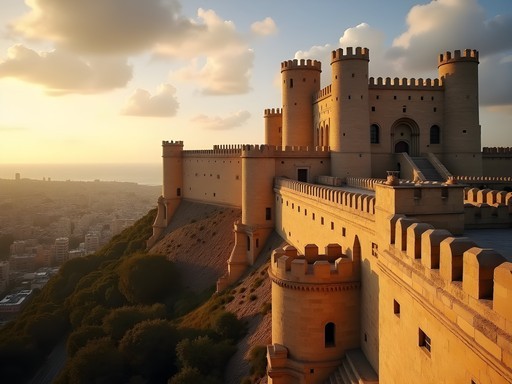






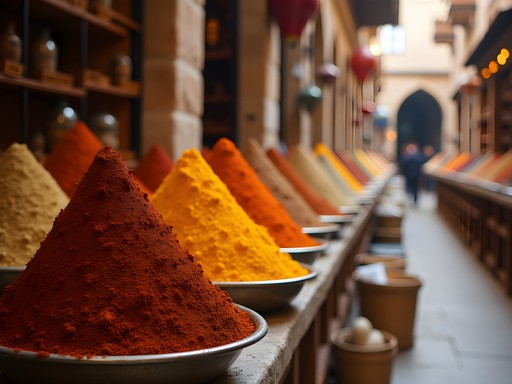
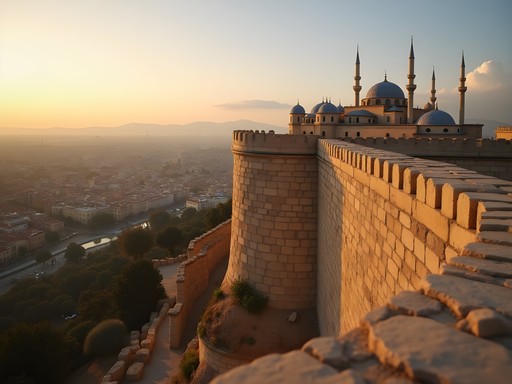
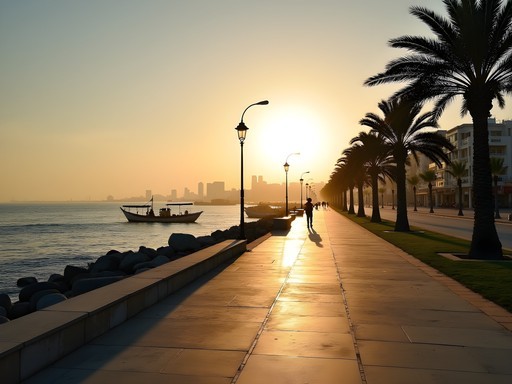





Comments
travelnomad
Just got back from Lebanon last week and Tripoli was the highlight! If you go, don't miss trying the street food near Al-Tall Square. There's a vendor selling kaak (sesame bread rings) that are to die for. And the citadel is even more impressive in person than in photos!
photolegend
Did you feel safe in Tripoli? I've heard mixed things.
travelnomad
Totally safe in the tourist areas! Just use normal travel precautions. The people were incredibly friendly and helpful.
smartmate3864
OMG this post couldn't have come at a better time!! Going to Lebanon in 2 weeks and now DEFINITELY adding Tripoli to the itinerary! Those hammams look AMAZING! Did you try any local food spots? And how did you get there from Beirut? Is there a good day tour or should we stay overnight?
beachrider
Not the author but we did the public transportation from Beirut. Super easy - just grab a service taxi from Cola Station. Cheap and took about 90 mins. Stay overnight if you can - the morning light on the citadel is incredible.
smartmate3864
Thanks for the tip! Definitely going to stay overnight now!
globeninja
Never even considered Lebanon for a trip but this post has me intrigued! Those hammams look incredible.
Jean Wells
Claire, your description of the Citadel took me right back to my visit last year! The way you captured that honey-gold light is exactly what makes Tripoli so photogenic. I spent three days exploring the old souks and found them far more authentic than Beirut's more tourist-oriented markets. For anyone planning a visit, I recommend hiring a local guide for the Citadel - the historical context they provide transforms the experience from simply seeing old stones to understanding the complex layers of history. And don't miss the hammam Al-Abed if it's open during your visit - I had a traditional scrub there that was both historically fascinating and incredibly rejuvenating.
smartmate3864
How did you arrange for a local guide? Going next month and would love recommendations!
Jean Wells
I booked through the Tripoli Tourism Office - they have English-speaking guides who are actually historians. Worth every penny! I used my pocket guidebook to prepare, but the local knowledge was invaluable.
beachrider
Wow, had no idea Tripoli had such rich history! Always thought Beirut was the only place worth visiting in Lebanon.
Jean Wells
That's exactly what the tourism board wants you to think! Tripoli is magnificent and far less crowded.
beachrider
Good to know! Is it safe though? That's my main concern.
Amit Sullivan
What a beautiful portrait of Tripoli, Claire! I spent three days there last autumn and was similarly enchanted. The historical layering you described is precisely what makes this city special - Crusader foundations with Mamluk and Ottoman flourishes above. I'd add that the souks are extraordinary for anyone interested in traditional crafts. I watched silversmiths and soap makers using techniques unchanged for centuries. The Khan al-Saboun (Soap Khan) was a highlight - I brought home several bars of their olive oil soap and still regret not buying more! For anyone planning a visit, I recommend the pocket guide which has an excellent walking tour of Tripoli's old city with historical context that really enhanced my visit. Claire, did you make it to the Taynal Mosque? The marble work there left me speechless.
coffeetime
How did you get from Beirut to Tripoli? Is it easy to do as a day trip or better to stay overnight?
Claire Hawkins
I took the public bus from Cola station in Beirut - about $2 and takes 1.5-2 hours depending on traffic. Definitely doable as a day trip, but I wish I'd stayed overnight to experience the evening atmosphere and morning markets!
coffeetime
Thanks! That's super helpful. Definitely adding this to my Lebanon itinerary.
Savannah Torres
Claire, this brings back such wonderful memories! I visited Tripoli with my family last year and my kids were absolutely fascinated by the Citadel. The way you can literally touch history there is incredible. We spent hours exploring those winding passages and imagining crusader knights walking the same steps. One tip for families - bring snacks and water as there weren't many options inside the citadel itself. We also loved the hammams but had to take turns watching the kids since they were too young to appreciate the quiet atmosphere. Did you try the famous Tripoli sweets? My children still talk about the knafeh from Abdul Rahman Hallab!
travelnomad
Savannah - how did you find Tripoli with kids safety-wise? I've been hesitant to venture beyond Beirut with my little ones.
Savannah Torres
We felt completely safe! The locals were incredibly welcoming to our children. Just use common sense like you would anywhere - we stayed in the main tourist areas and were back at our hotel by evening.
photolegend
That golden light on the citadel in your cover photo is absolutely stunning! What time of day was that taken?
Claire Hawkins
Thank you! That was about an hour before sunset - around 5pm in May. The light in Tripoli gets this beautiful honey quality in late afternoon.
coolseeker
That golden hour photo of the citadel is absolutely stunning! Your post brought back great memories of my visit last year. The hammams were closed for renovation when I was there - looks like I need to make a return trip!
Claire Hawkins
Thank you! The light in Tripoli is magical in late afternoon. And yes, the Hammam al-Jadid just reopened after a long restoration - definitely worth a return visit!
Venture X
Premium card with 2X miles, $300 travel credit, Priority Pass